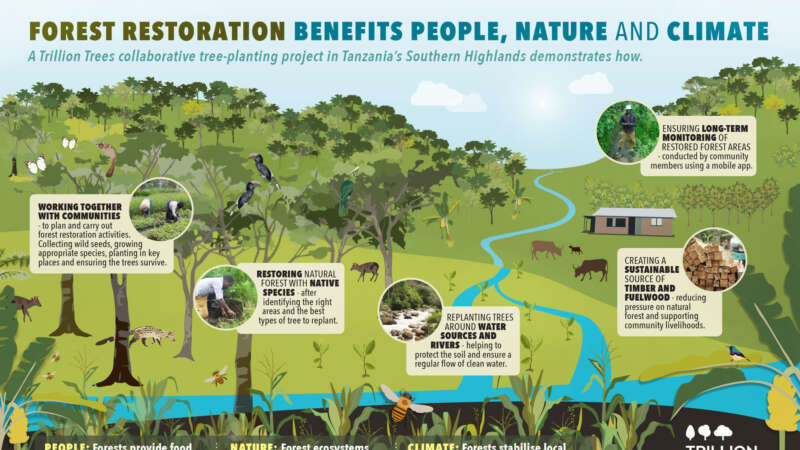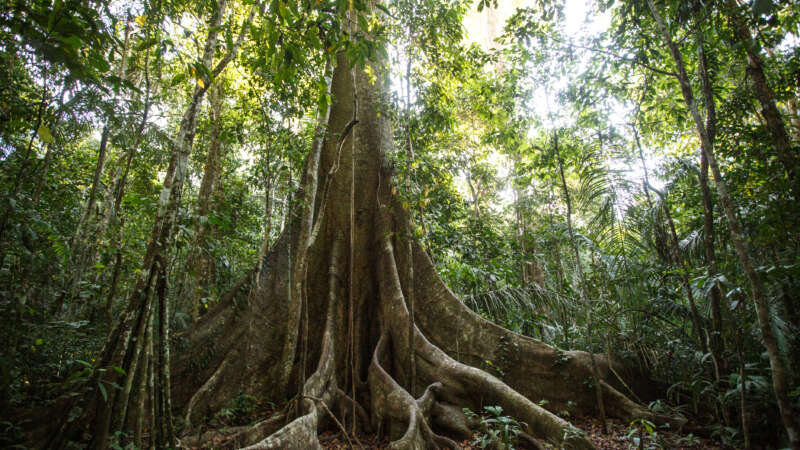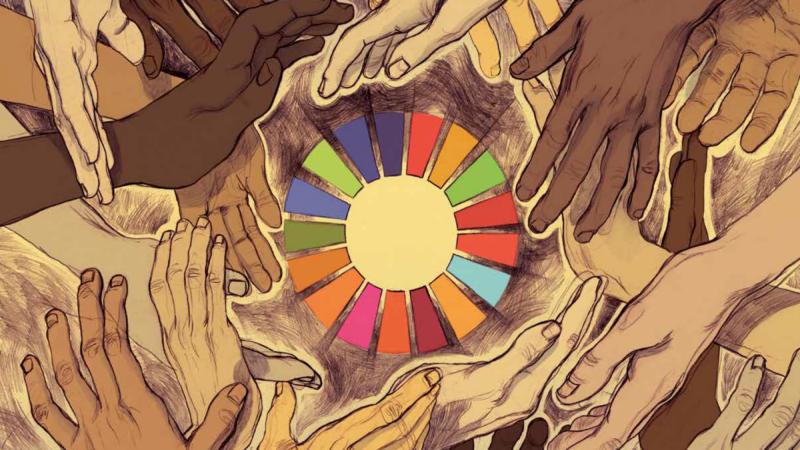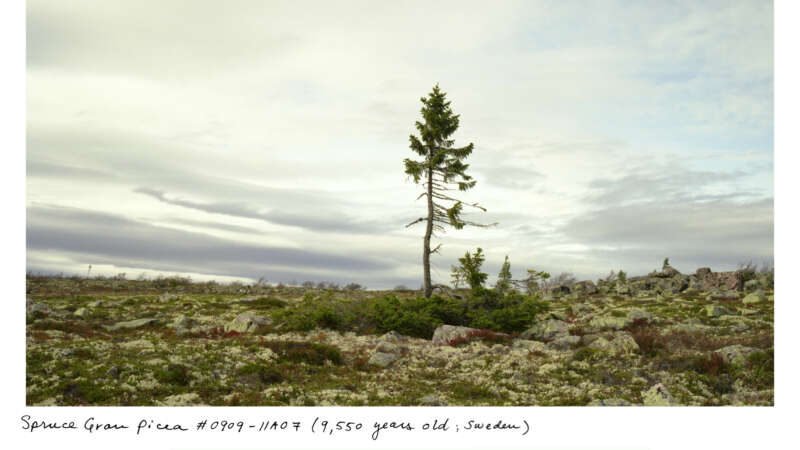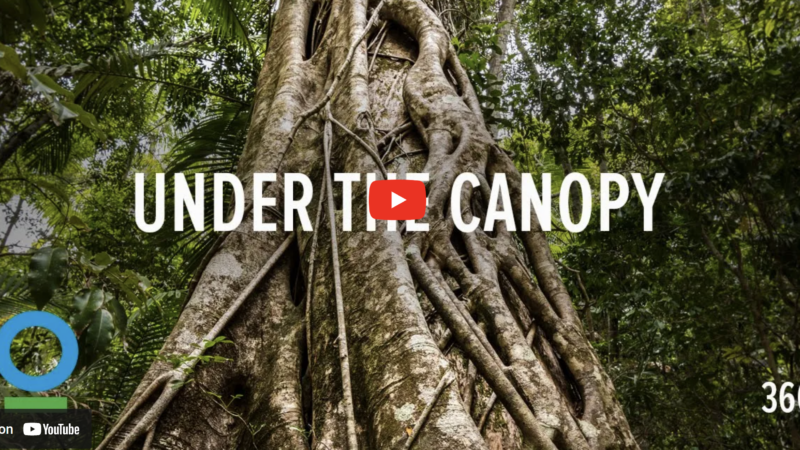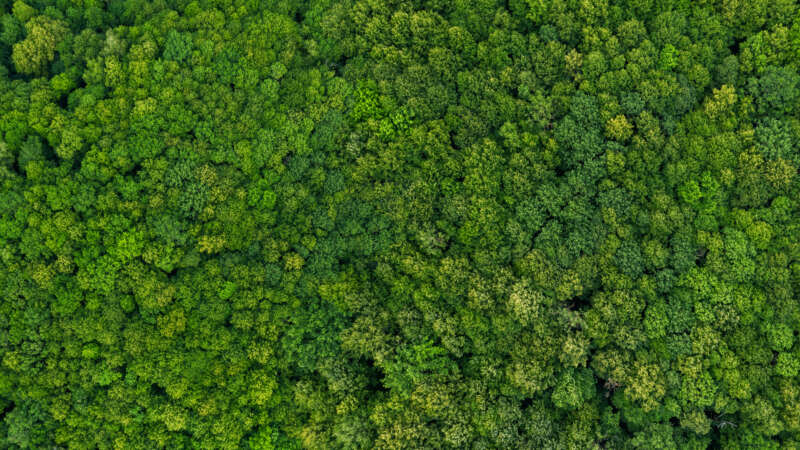Forests
Trillion Trees: Communities Working to Restore Forests
In 2019, Trillion Trees partner The Wildlife Conservation Society (WCS) received support from Ecosia, the search engine that plants trees, to restore tree cover to Tanzania’s Southern Highlands. Working in collaboration with district council and community-based organizations, the project aims to restore degraded areas, protect water catchments and create community woodlots, with the ambition of planting 900,000 new trees over two years, making a lasting difference for people, nature and the climate.
Guardians of the Forest
In September 2018, indigenous and local community leaders from Latin America and Indonesia, the Guardians of the Forest, travelled to California with a mission to …
Indigenous Peoples’ Role in Protecting Forest Health
Nearly a quarter of the world’s population, or about 1.6 billion people, depend on forest resources to sustain their livelihood. This number includes an estimated 60 million who are members of indigenous groups. The worldviews of most indigenous cultures include a sacred obligation to serve as stewards of a healthy forest that can sustain its inhabitants for generations.
Indigenous peoples have been effectively managing their forests since “time immemorial,” yet governmental and scientific forestry experts have only recently begun to seek out the knowledge that indigenous peoples have about environmental management.
Earth Day & Public Health: Unavoidably Connected
Each year on April 22nd, people and nations around the world celebrate Earth Day to raise awareness and promote action toward environmental protection and sustainability. Activities typically include community clean-ups and educational campaigns designed to promote sustainability in daily life.
The origins of Earth Day date back to the 1960s and a decade of growing enviro-consciousness brought about by the publication of Rachel Carson’s Silent Spring and a series of environmental disasters that climaxed with a devastating oil spill off the coast of California in 1969. Gaylord Nelson, a U.S. Senator from Wisconsin, organized the first Earth Day in 1970, when an estimated 20 million Americans took part in organized activities ranging from tree plantings to beach cleanups and teach-ins on college campuses.
Since those humble beginnings, Earth Day has become a global event – but amidst the tree plantings and landscape revitalization lies a subtle and yet direct connection between Earth Day and Public Health. Just as we depend on the natural environment for our survival, civilization creates and shapes a social and economic environment that greatly influences the health and well-being of our species.
Rachel Sussman: Artistic Explorations of Natural Wonders
Rachel Sussman is a contemporary artist based in Brooklyn.
Sussman is a Guggenheim, NYFA, and MacDowell Colony Fellow, and two-time TED speaker. Her critically acclaimed, decade-long project “The Oldest Living Things in the World” combines art, science, and philosophy into a traveling exhibition and New York Times bestselling book.
Under the Canopy
Journey into the largest tract of tropical rainforest on our planet — the Amazon.
Narrated by indigenous guide, Kamanja Panashekung, and actor Lee Pace, this new virtual reality film by Conservation International and Jaunt VR takes you into the Amazon and urges the protection of world’s largest rainforest.
Forests & Earth’s Temperatures
Seeing the forest through the trees is an expression you may not think of when the topic of global warming comes up. However, 31% of the earth’s surface is covered by trees and each one is working overtime to sequester carbon to combat global warming. Carbon sequestration is a natural or artificial process by which carbon dioxide is removed from the atmosphere and held in solid or liquid form, and it is estimated that forests absorb approximately 7.6 billion metric tons of carbon annually.
